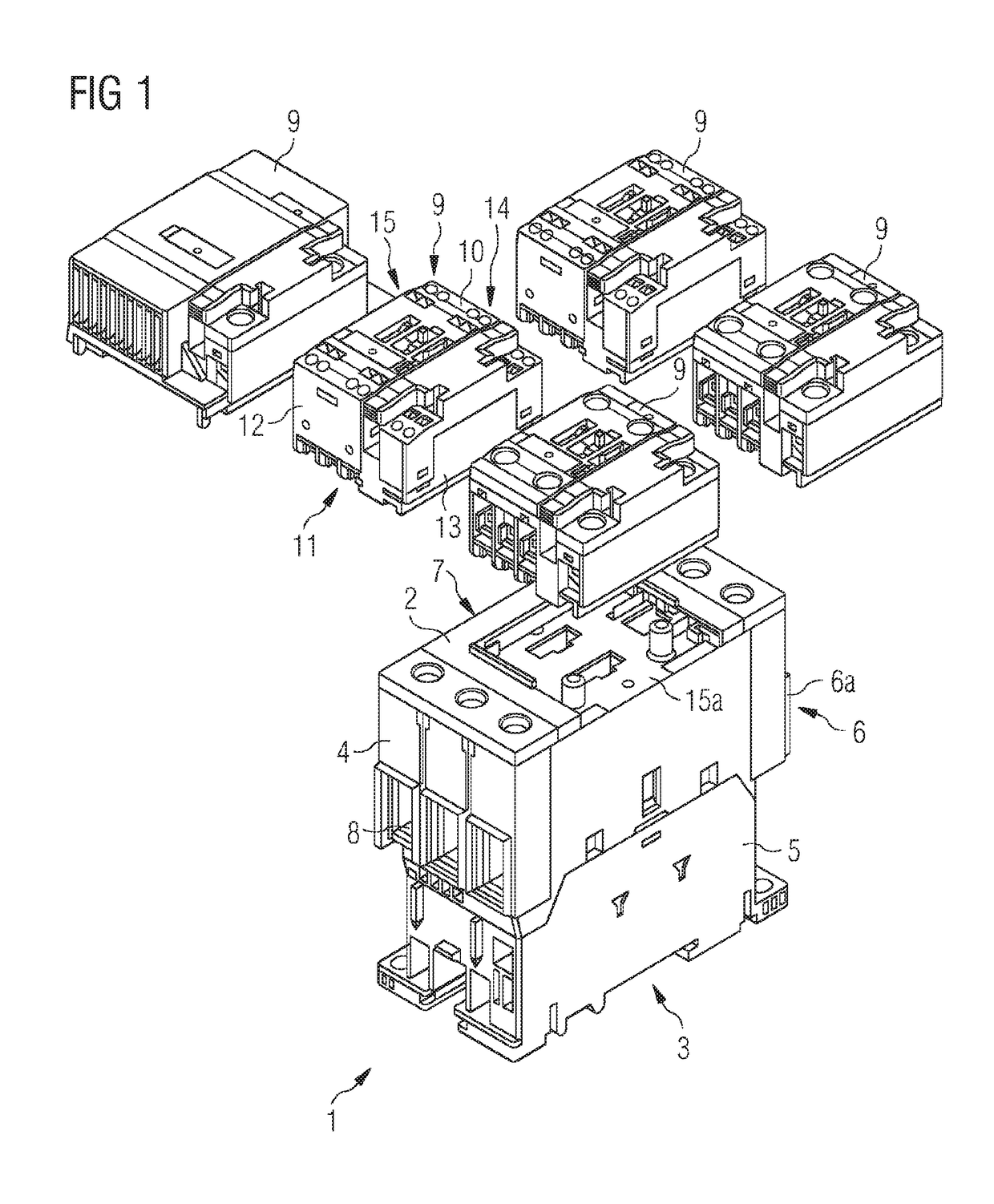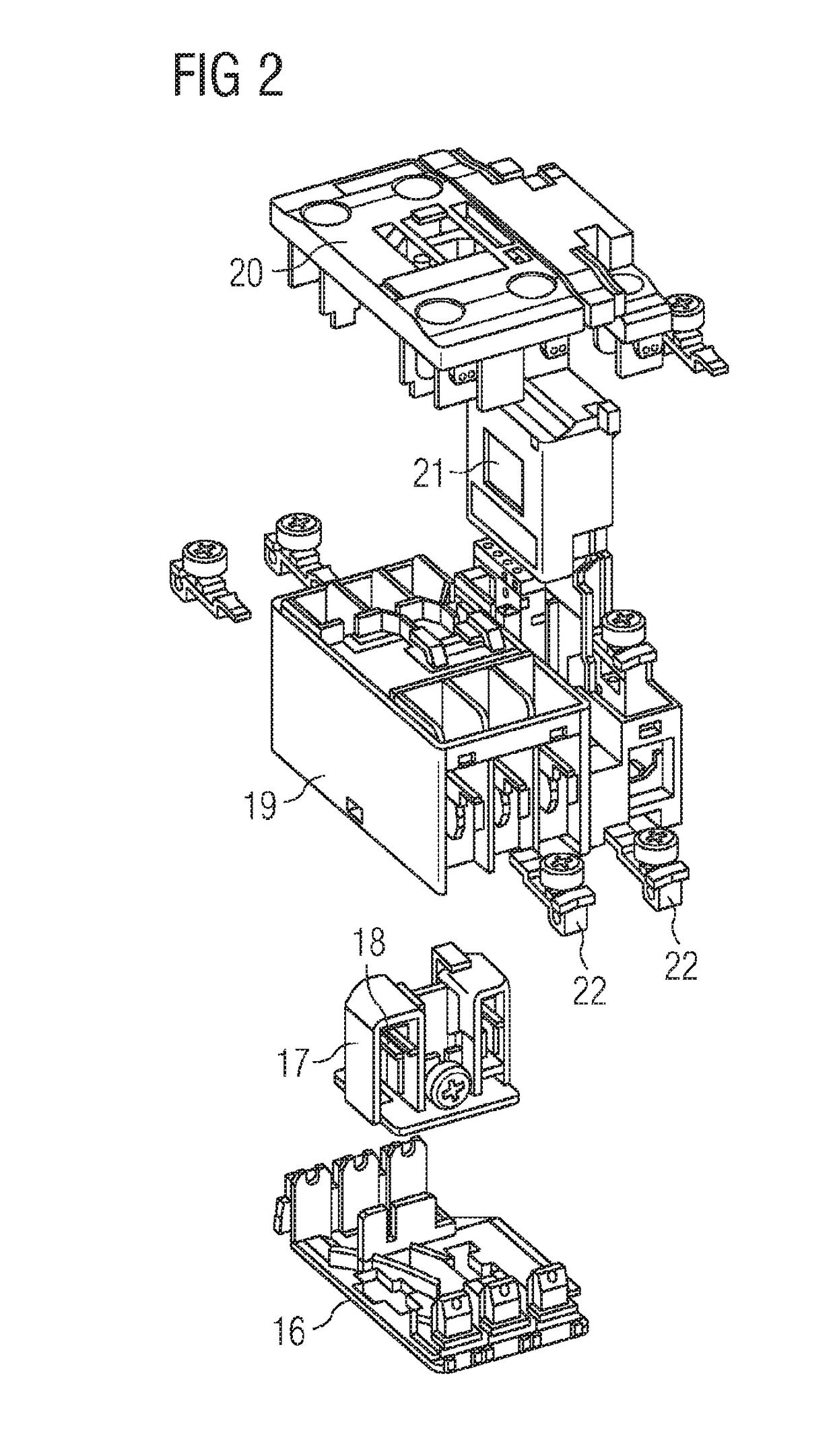Low-voltage switching device with a variable design
a low-voltage switching and variable-design technology, applied in the direction of electromagnetic relays, electrical apparatus, electromagnetic relay details, etc., can solve the problems of increased production costs of these devices, complex and complete tooling for their production, and easy failure and dimensional deviation
- Summary
- Abstract
- Description
- Claims
- Application Information
AI Technical Summary
Benefits of technology
Problems solved by technology
Method used
Image
Examples
Embodiment Construction
[0025]FIG. 1 depicts a low-voltage switching device, in particular a contactor, constructed in accordance with the invention. The low-voltage switching device is configured in two parts, including a base module 1 that is preferably of cuboid design and includes an upper side 2, an underside 3 and four lateral elements 4, 5, 6, 7. A connection region 6a and 8 for electrical conductors is preferably arranged on the lateral elements 4 and 6. A separate auxiliary module 9, which is attachable to and detachable from the base module 1, is preferably arranged on the upper side 2 of based module 1. Auxiliary module 9—several distinct forms of which are depicted in FIG. 2—may be configured as a standard auxiliary module, as a communication auxiliary module, or as a capacitor switching contactor auxiliary module. The auxiliary module 9 is preferably also of cuboid design, with an upper side 10, an underside 11 and four lateral elements 12, 13, 14, 15. The auxiliary module 9 is mountable on th...
PUM
 Login to View More
Login to View More Abstract
Description
Claims
Application Information
 Login to View More
Login to View More - R&D
- Intellectual Property
- Life Sciences
- Materials
- Tech Scout
- Unparalleled Data Quality
- Higher Quality Content
- 60% Fewer Hallucinations
Browse by: Latest US Patents, China's latest patents, Technical Efficacy Thesaurus, Application Domain, Technology Topic, Popular Technical Reports.
© 2025 PatSnap. All rights reserved.Legal|Privacy policy|Modern Slavery Act Transparency Statement|Sitemap|About US| Contact US: help@patsnap.com



